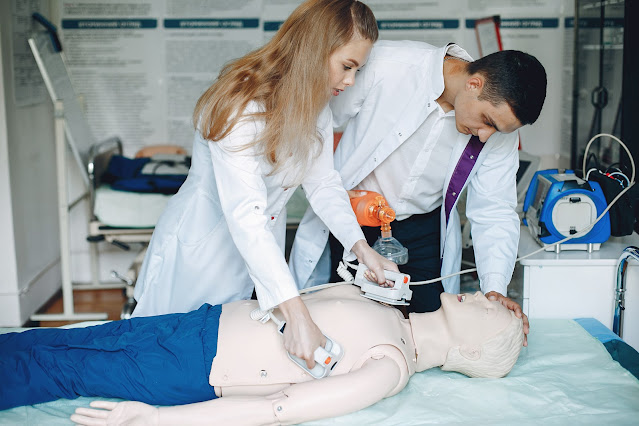Introduction: Why CPR Courses Matter
Cardiopulmonary resuscitation (CPR) is a vital lifesaving skill that can make a significant difference in an emergency situation. Acquiring proper CPR training and certification can not only save lives but also provide peace of mind knowing that you are prepared for a variety of unexpected incidents. In this comprehensive guide, we will explore the importance of CPR courses, the types of courses available, and how to choose the right CPR course for your needs. With the knowledge and skills gained from a CPR course, you can become a critical asset in times of need.
Understanding the Importance of CPR Courses
CPR is a crucial skill that can save lives in various situations, such as cardiac arrest, drowning, or other emergencies where someone's breathing or heartbeat has stopped. By performing CPR, you help circulate oxygen-rich blood throughout the body, keeping vital organs alive and increasing the likelihood of survival. Additionally, CPR courses also teach critical skills like using an automated external defibrillator (AED), recognizing signs of emergencies, and how to respond swiftly and effectively.
A well-rounded CPR course can provide the following benefits:
- Confidence in your ability to act in an emergency
- Improved knowledge of how to respond to different types of emergencies
- Increased employability in certain fields, such as healthcare or childcare
- Compliance with a workplace or legal requirements for CPR certification
Different Types of CPR Courses:
Various types of CPR courses are available, each designed to cater to specific needs and requirements. Some common CPR courses include:
- Basic Life Support (BLS): This course is designed for healthcare professionals and covers CPR and AED use for adults, children, and infants. BLS also includes techniques for clearing airway obstructions and rescue breathing.
- Heartsaver CPR AED: This course is intended for non-healthcare professionals, such as teachers, coaches, and parents. It covers adult CPR and AED use, with optional modules for child and infant CPR.
- Advanced Cardiovascular Life Support (ACLS): This advanced course is designed for healthcare professionals who need specialized training in managing complex cardiac emergencies. It covers advanced airway management, pharmacology, and cardiac arrest algorithms.
- Pediatric Advanced Life Support (PALS): This course focuses on pediatric emergencies and is designed for healthcare professionals who work with children and infants. It covers advanced pediatric airway management, pharmacology, and cardiac arrest algorithms.
Choosing the Right CPR Courses
When selecting a CPR course, consider the following factors:
- Your role and responsibilities: Determine the level of training required for your job or personal needs. Healthcare professionals may need BLS or ACLS certification, while non-healthcare professionals may only need a Heartsaver CPR AED course.
- Course content: Ensure the course covers the skills and knowledge you need. For example, if you work with children, select a course that includes child and infant CPR.
- Course provider: Ensure the provider is reputable and accredited by organizations such as the American Heart Association (AHA) or the Red Cross.
- Course format: Choose between online or in-person courses based on your preferences and schedule.
Online vs. In-Person CPR Courses
Both online and in-person CPR courses have their advantages and disadvantages:
Online CPR Courses:-
- Convenient and flexible, allowing you to complete the course at your own pace
- Accessible from anywhere with an internet connection
However, online courses may lack hands-on practice and direct interaction with an instructor.
In-Person CPR Courses
- Provides hands-on practice, allowing you to apply your skills in a supervised setting
- Offers direct interaction with an instructor for guidance and feedback
However, in-person courses may have limited availability and require travel to a training center.
CPR Certification and Recertification
After completing a CPR course, you will receive a certification card. CPR certifications are typically valid for two years, after which you will need to complete a recertification course. Recertification ensures your skills and knowledge remain up-to-date and demonstrates your commitment to maintaining lifesaving abilities.
The Value of First Aid Courses
First aid courses complement CPR training by providing knowledge and skills to address a wide range of emergencies, such as burns, fractures, and allergic reactions. A combined CPR and first aid course can provide a comprehensive understanding of how to respond effectively in various emergency situations, further increasing your preparedness and confidence.
Conclusion
CPR courses are essential for empowering individuals with the skills and knowledge to save lives during emergencies. By understanding the different types of CPR courses, choosing the right course for your needs, and maintaining certification, you can become an asset in critical situations. Additionally, first aid courses can further enhance your preparedness and ability to respond to a wide range of emergencies. Invest in a CPR course today to gain the confidence and skills needed to make a difference when it matters most.


Comments
Post a Comment